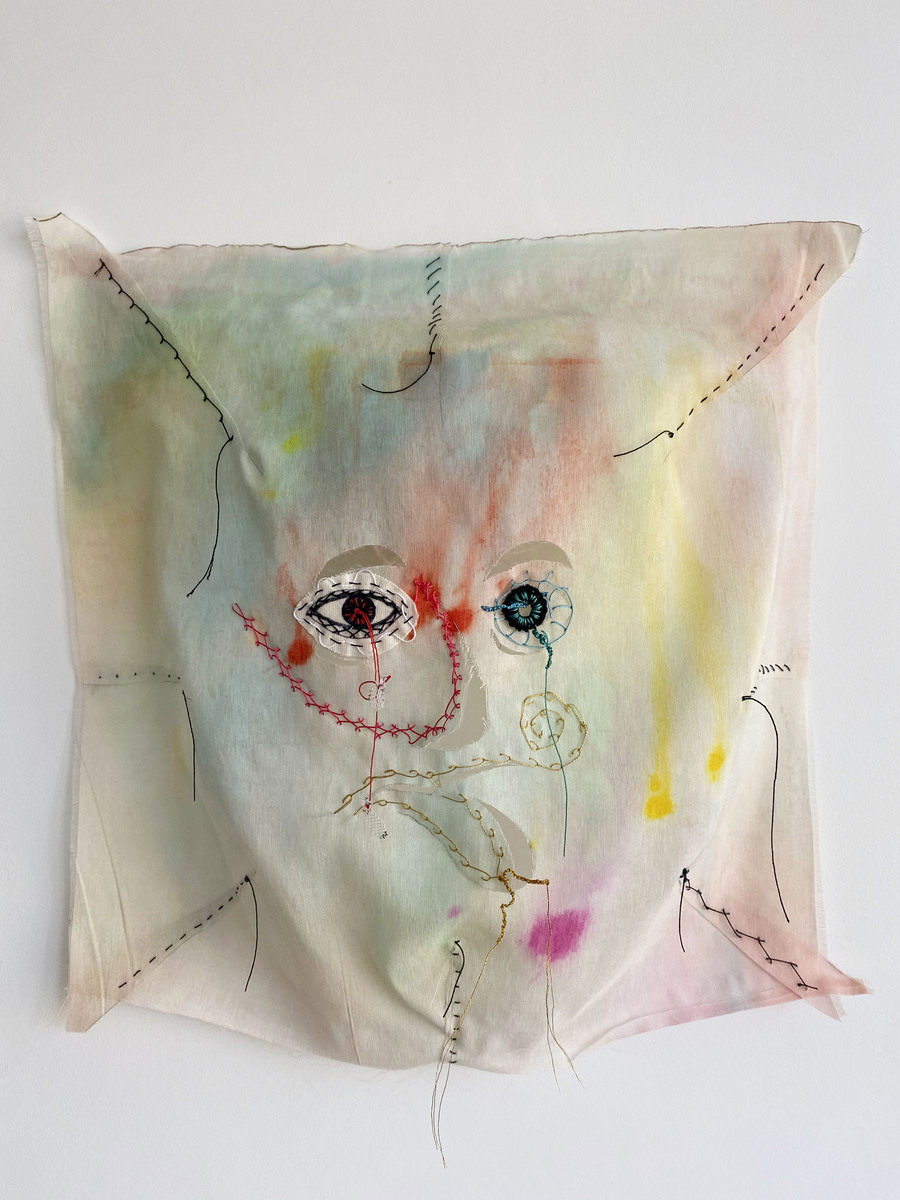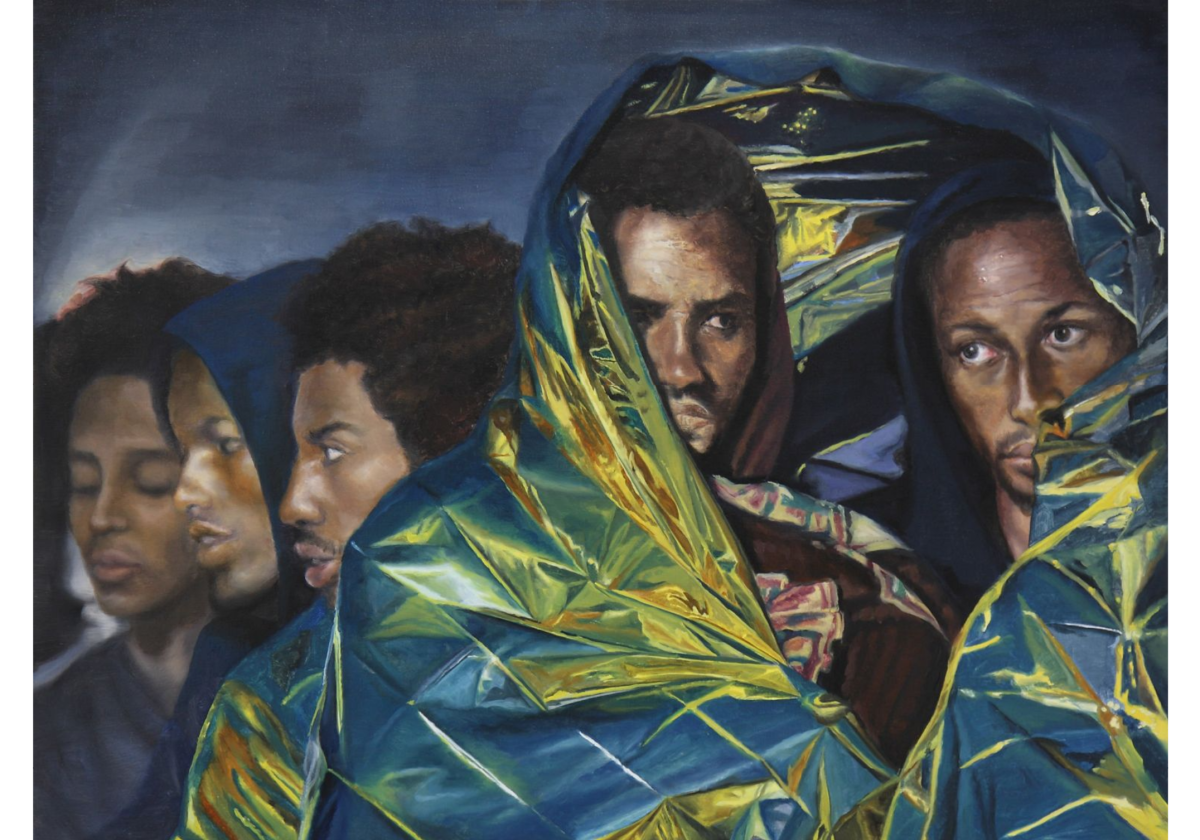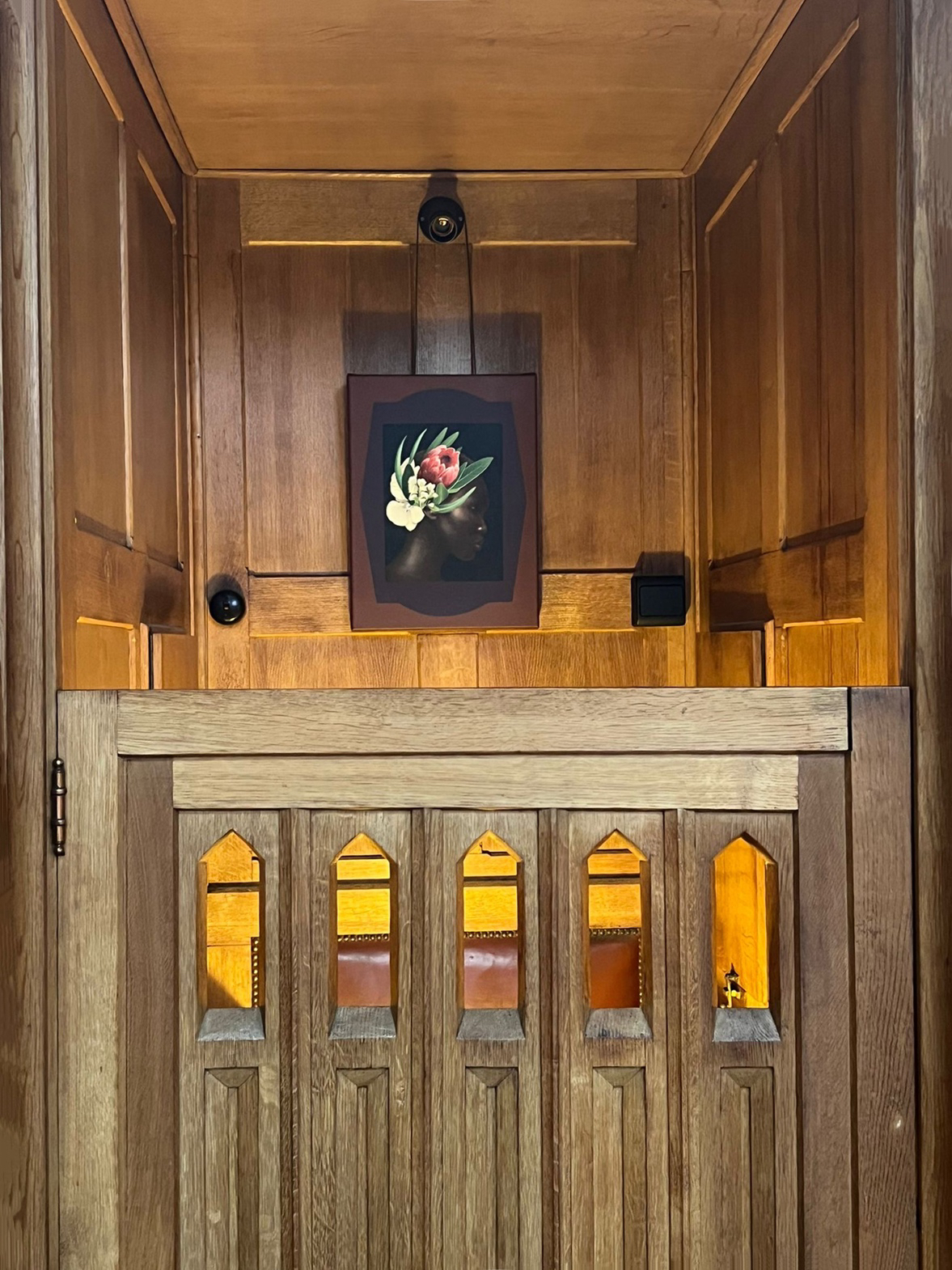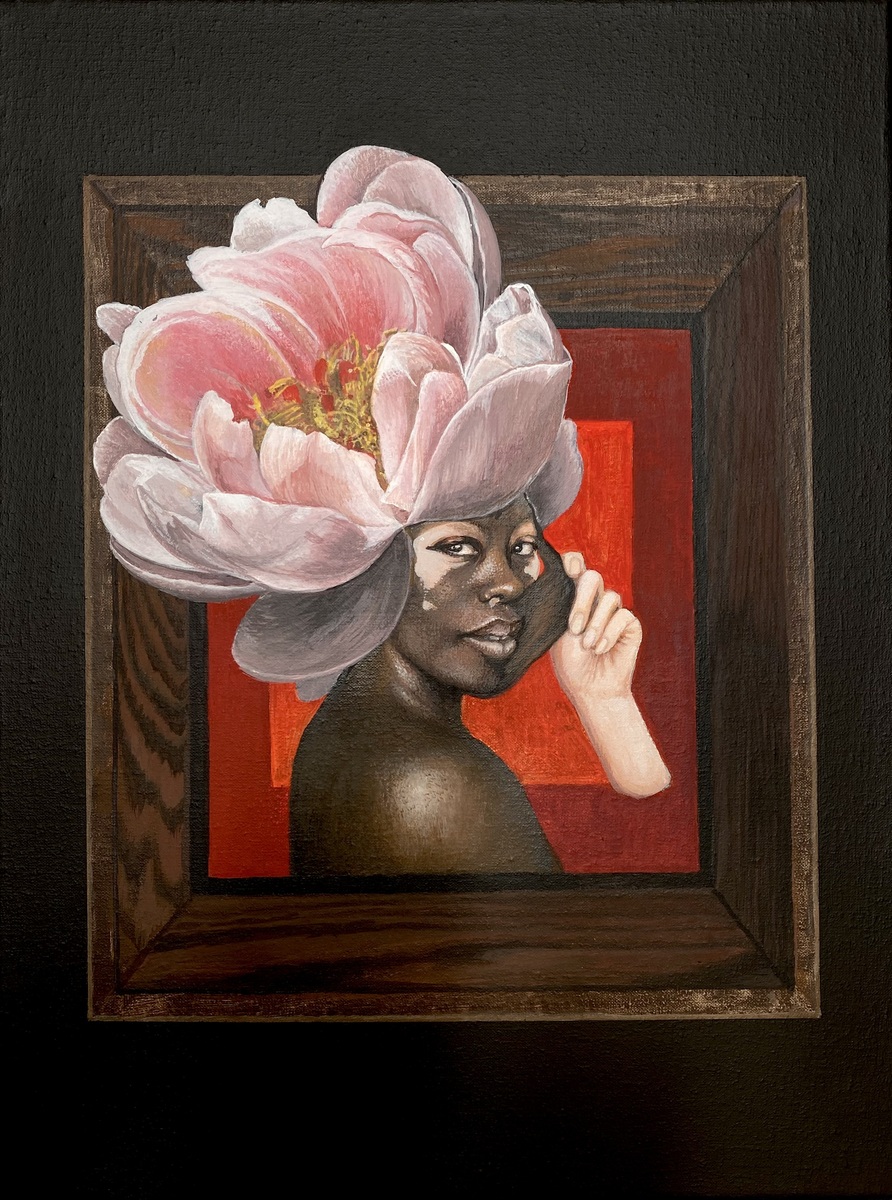ARTWORKS

The Sinistry
POINTS OF INTERSECTION IN THE EXTREME

Maryam Najd is a painter born in 1965 in Tehran, Iran; she now lives and works in Antwerp, Belgium. In her work, which oscillates between figurative and abstract styles, and often borders on Surrealism, she explores a variety of themes to do with immigration, freedom and womanhood. Najd often draws on extremes and finds their intersection points, within geographical, political, humanitarian and spiritual contexts.
Najd’s interest in art started early in childhood and stayed with her through secondary school. Destiny took a turn when her father, recognising her innate talent, encouraged her to pursue art – an unusual decision at the time in Tehran .
Najd received her first formal art education from a master of traditional miniature painting. Her desire to expand and deepen her skills and level of artistic expression led her to complete a degree in painting at the University of Fine Arts in Tehran. This was a difficult time for the country, during the Iran–Iraq War (1980–88), and also personally disheartening as she began to realise the limits imposed on artistic expression in her homeland. Anything to do with politics and religion were prohibited, yet those were the topics Najd was most interested in.


In 1992, with her brother’s support Najd left for Belgium, where she continued her artistic education with at the Academy of Fine Arts and then the Higher Institute of Fine Arts, both in Antwerp. Here, she learned about human anatomy and contemporary forms of art, such as installation and video, all subjects that were not then taught in Iran. These early years in Belgium marked the genesis of her blend of abstract and figurative styles, a fusion that reflects the amalgamation of her diverse artistic influences. Her work also took on a deeper, more provocative tone.
“My ideas probably sound very political, but actually they’re just very emotional.”
Najd’s work is a reflection of her emotional and intellectual response to the world. Her pieces unravel layers of societal complexity and draw attention to the basic human yearning for freedom. She reminisces on her time in Iran, where basic freedoms are restricted and the inequality between men and women is exacerbated by both religion and the political regime.

In the Non-Existence Flag Project (2010–13), she explores a world undergoing constant transformation, concealing and fragmenting itself amid turmoil, challenging the fixation on boundaries while delving into the symbols, such as flags and flowers, that shape national identities. The series offers a radical yet aesthetically pleasing alternative to the often reductive representations of such symbology.
Her most recent body of work, Colour Blind Society, was prompted by Najd’s discovery of the tragic and brutal stories of Ota Benga and Saartjie Baartman – two Africans who were put on display in ‘human zoos’ in Europe and North America during the 19th and early 20th centuries. This motivated her further exploration into the censorship surrounding discussions of race and slavery, and the global escalation of racial discrimination.
Najd says her personal emotional response is crucial to her art. From an initial idea, everything develops within the research process. She notes the importance of picking a theme that affects people globally, an issue that is close to many people’s hearts, not just hers. Hence her interest in themes of racism, inequality and lack of political freedom.
Najd says that her next project is still in development, but it concerns the topic of art censorship in the 20th century. The initial inspiration came from Art and Liberty, an art movement that emerged in Cairo in 1938 in response to fascism, and which led to a distinctly Egyptian style of Surrealism. The project promises to be a deep dive into the suppressed narratives of artists, particularly those from the Middle East.
Najd’’s vision for the future is marked by relentless creative exploration and an unwavering commitment to elevating the artistic value of her work.
